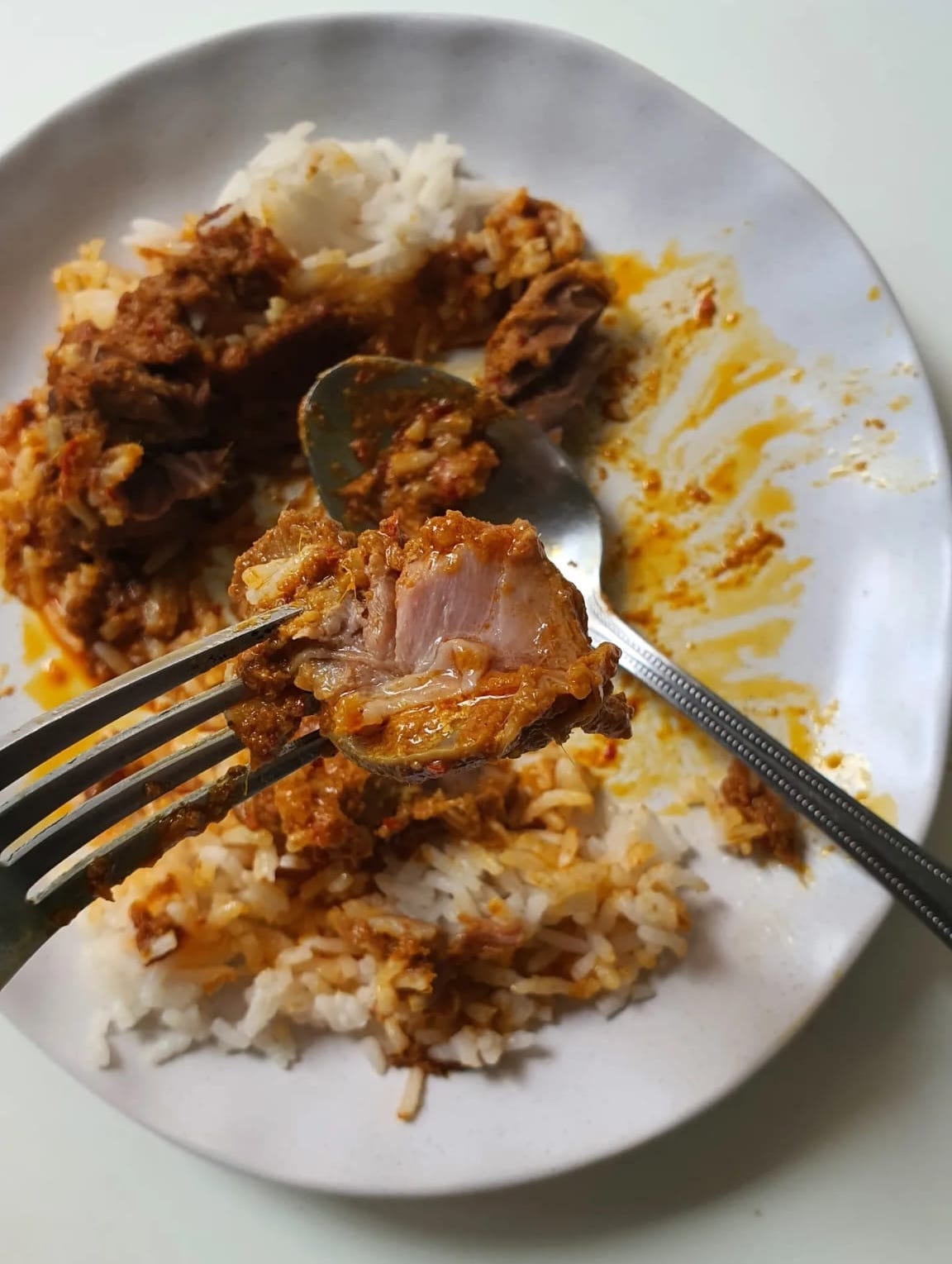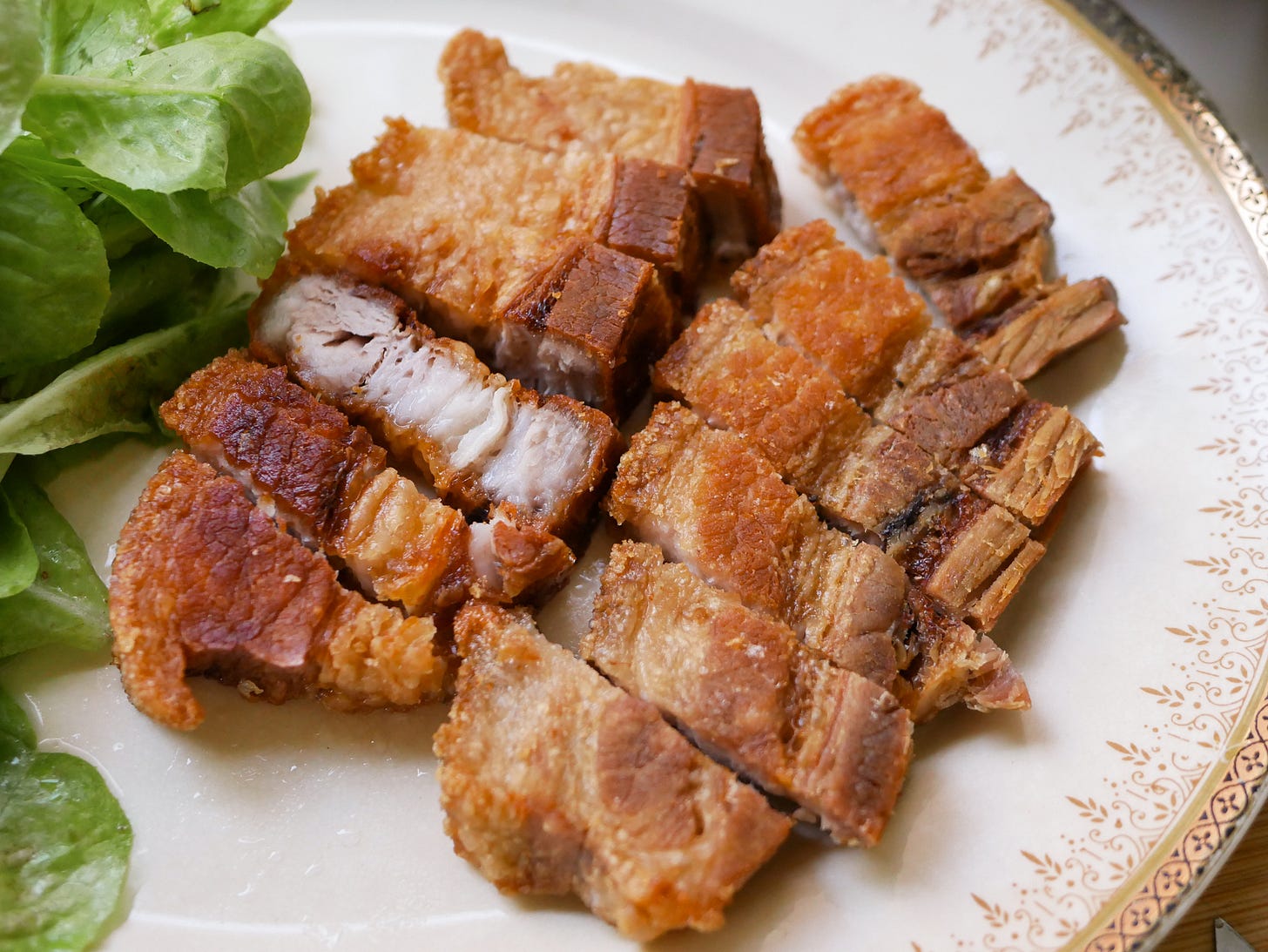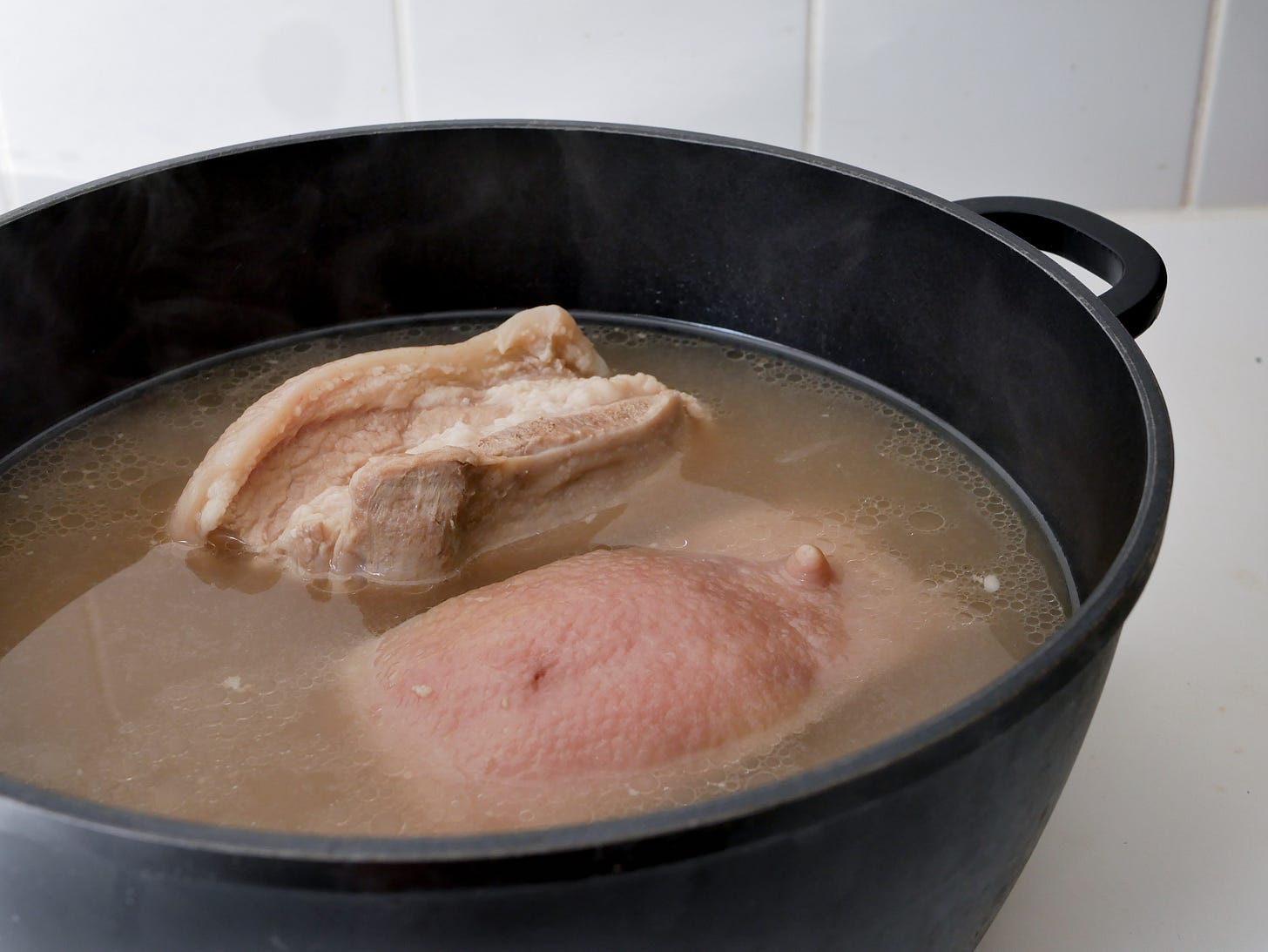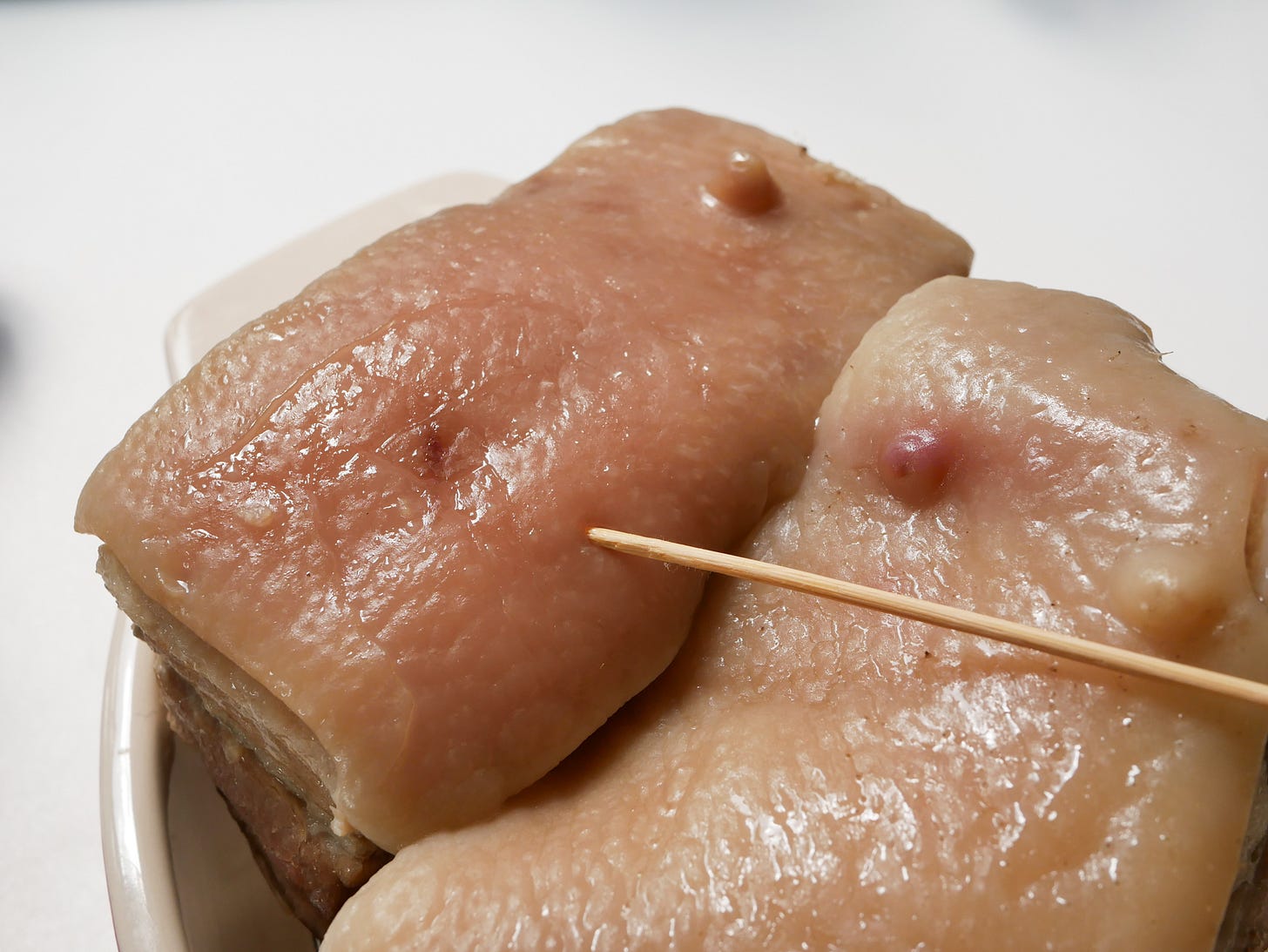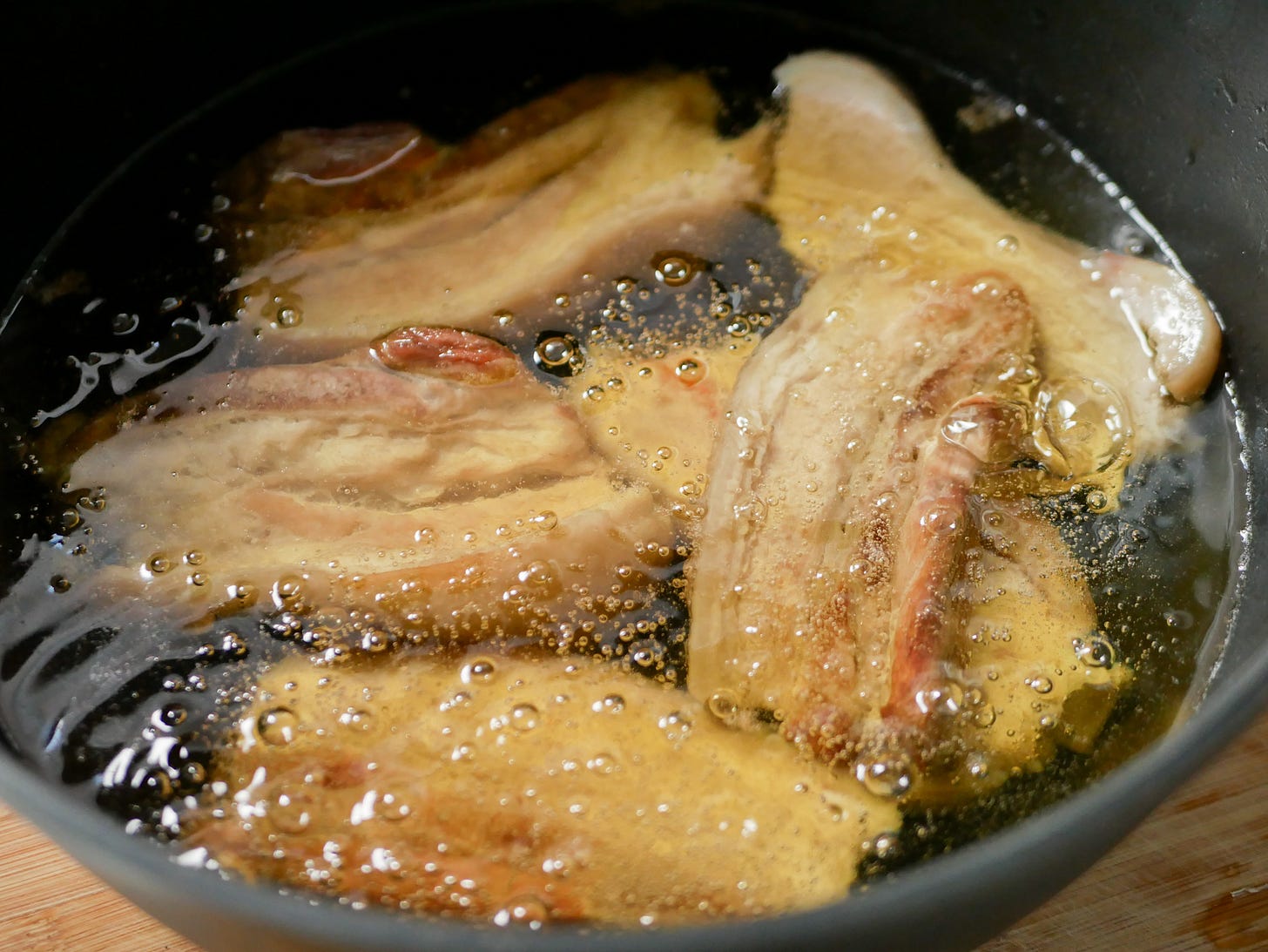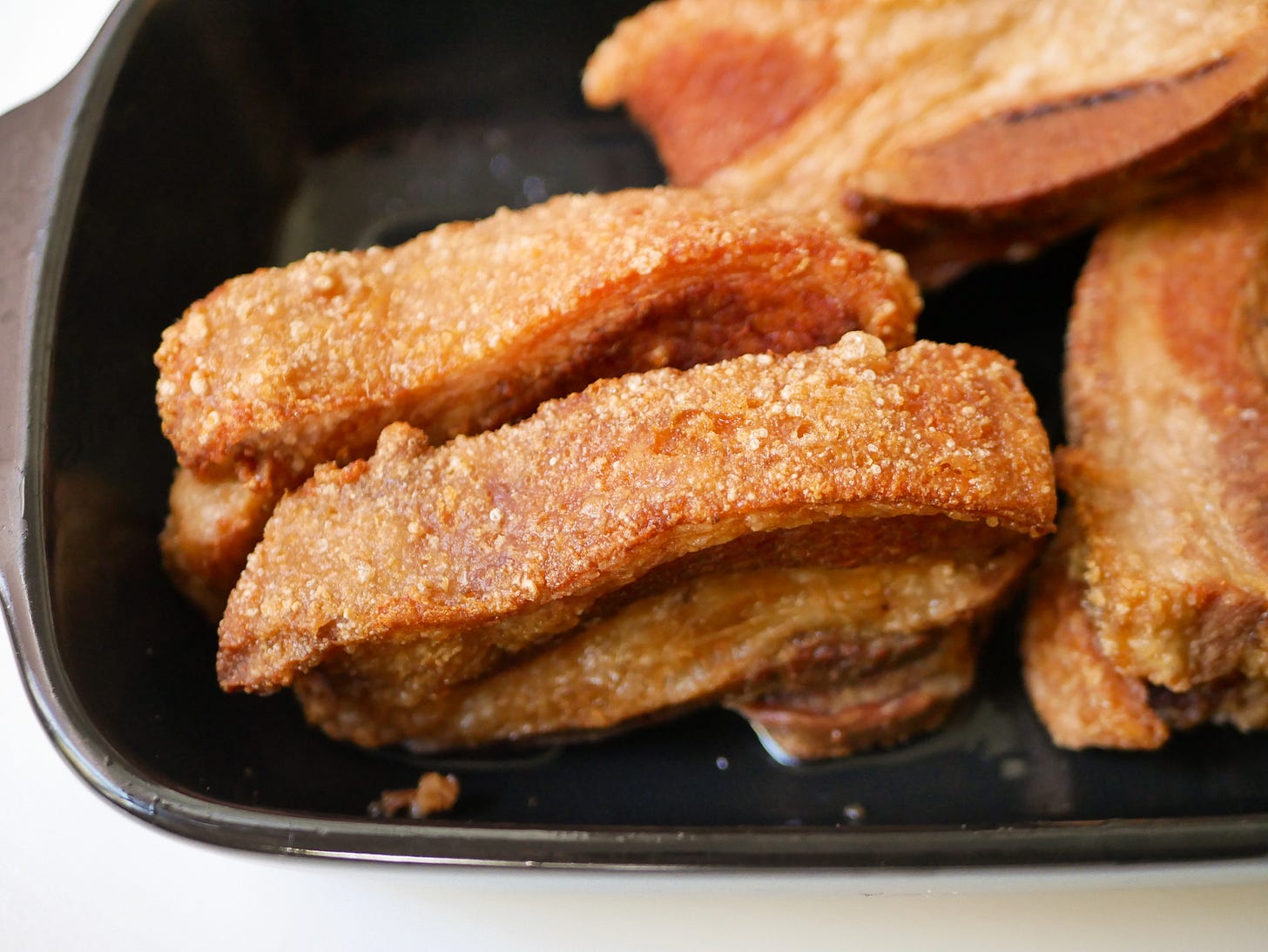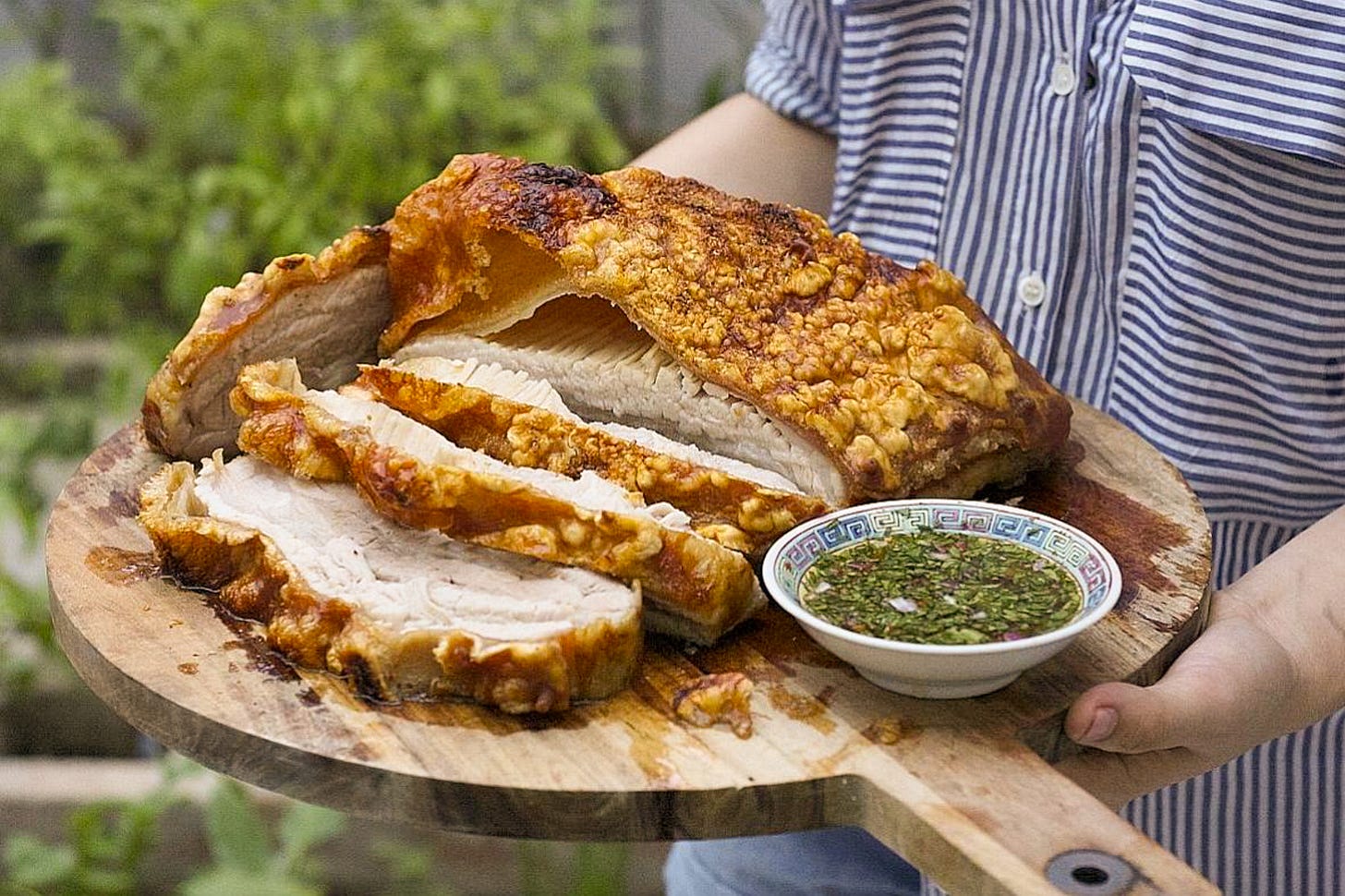Crispy pork belly
general principles and techniques to make puffy chicharron-style skin vs finely blistered skin
✨ Welcome to Singapore Noodles, a newsletter dedicated to celebrating Asian culinary traditions and food cultures. Every Monday, you’ll be receiving a tasty mix of food history, stories, and recipes straight in your inbox. Archived recipes and other content can be found on the index. This newsletter is 100% reader-funded; each paid subscription supports the writing and research that goes into the newsletter, pays guest-writers, and gives you access to all content and recipes. Thank you for being here and enjoy this week’s post. ✨
Wex and I are currently in Singapore for our annual visit — I will be staying for a full month to work on the photography of my third cookbook and he will be returning to the Netherlands two weeks before me. I like leaving food in the freezer when I’m away to expedite Wex’s dinner-making after work, and this time I’ve stocked our freezer with some incredible beef shank rendang that I made with Ling’s recipe. Look how beautifully it turned out:
Also in our freezer is a very limited stash of crispy pork belly, saved from one of our dinners last week. While Cantonese roast pork (siu yoke) might be the most well-known crispy pork belly from Asia, I adore the deep-fried variant too. In Thailand, this is known as muu krob, which can be enjoyed on its own with an accompanying dip, or work as a springboard for a whole host of dishes (Daniel Almond recently shared a recipe for pad krapao muu krob on ). In the Philippines, crispy pork belly is known as lechon kawali; this local name is indicative of the way the pork is cooked: in a wok or “kawali”.
Pork skin is, in composition, 30% collagen. Arranged in a weave across animal skin, collagen is what contributes to the toughness, flexibility, and tensile strength of leather. Expose pork belly to high temperatures and the collagen fibres immediately stiffen before they get a chance to convert to gelatin, resulting in rind that is impossible to chew. Heat the pork belly gently, however, between a temperature range of 170°F (77°C) to 205°F (96°C) over an extended period of time and the rind turns soft and wobbly. When this is subjected to a blast of heat, it crisps up magnificently without risk of sticking to your teeth. Once you appreciate this principle, you’ll gain an appreciation for the way that it guides crispy pork belly cookery around the world:
Siu yoke: Gentle roast + intense roast.
Thomas Keller’s crispy pork belly confit: Confit + hard-sear to develop colour + finish in the oven.
Matty Mattheson’s porchetta: Gentle roast + hot oil poured over the skin.
Lechon kawali / muu krob: Braise + deep-fry.
Lechon kawali and moo krob are both made by braising pork belly before deep-frying. This is genius — not only does simmering convert the collagen in pork rind to gelatine, it’s a terrific way to get flavour into the pork and season it all the way through. I add dried bay leaves, black peppercorns, onion, and garlic for flavour, and a dash of vinegar to further break down connective proteins in the skin. By the time the pork is done braising, you are left with a pot of intensely flavoured braising liquor, which is a gift that keeps on giving. I used some of it in place of water to cook rice to accompany the crispy pork belly, and repurposed the rest as a broth for noodles.
With lechon kawali and moo krob, the rind is typically jabbed with a sharp object (satay stick / toothpick / fork) after the pork belly has been braised. This creates miniature holes that act as channels for steam to escape and for fat to render. Allowing steam to escape in a controlled manner is what produces a finely blistered rind and prevents large, uneven bubbles in the rind. Some cooks score the skin with a knife, but I prefer not to as it is very easy to cut too deep. Another tip is to rub salt all over to pull moisture out and dry out the rind; because the next step is to deep-fry the pork, you want it to be as dry as possible. Let the meat air-dry, uncovered, overnight in the refrigerator. The next day, it should have firmed up enough to be sliced; this allows for easy handling during the frying process.
Now that the pork belly rind has been softened, it can be subjected to high temperatures to stiffen the proteins — thus transforming it from flabby to firm, to crispy. But here’s where the road diverges: depending on the treatment, you could end up with a puffy, chicharron style of crispy pork belly, or crispy pork belly with a finely blistered rind. The determining factor here is the water content in the skin before it hits the hot oil. Some cooks take the trouble to roast the pork belly low-and-slow, or allow it to air-dry in the refrigerator for several days to further drive off moisture from the rind. When the dried pork skin is scalded in hot oil, the residual water within the skin rapidly turns to steam, causing the structure of the skin to inflate like a balloon. This trait can be accentuated if the skin hadn’t been pricked or scored, as large pockets of steam would be allowed to build up within the skin and result in dramatic puffing. A uniformly blistered look is achieved by pricking the skin and only partially drying it (overnight rest in the refrigerator) before the pork belly is fried.
In Chef RV Manabat’s lechon kawali tutorial on Youtube, he boiled a big batch of pork belly and cooled a third overnight, froze a third, and dried the rest in the oven before frying. The difference in results between the oven-roasted batch and the other two, as you can see for yourself in the video, are astounding. Below, you can also see a huge difference between the rind of pork belly that I pricked and merely left to air-dry overnight before frying, and the rind of pork belly that I did not prick and subjected to low-and-slow roasting before a final blast of intense heat. Both styles are good; it’s simply a matter of what you prefer!
Texture of rind aside, how does muu krob or lechon kawali compare to roast pork belly, such as siu yoke? It is certainly more sinful, the way all deep-fried food are, and there’s more oomph from the caramelisation on all sides. I also appreciated that the pork is seasoned all the way through rather than being seasoned just on the outside. Deep-frying does mean that the results are a tad dryer, since the slab is sliced into smaller pieces to facilitate handling, but that’s why you have sauces and dips to accompany the dish. Here are two quick ones that I whipped up:
Vinegary dip: This began as a Vietnamese nước chấm, but I spiked it with more vinegar to cut the grease and added minced red onion. Fish sauce + sugar + vinegar + water + chopped garlic + chopped bird’s eye chilli + minced red onion.
Mayonnaise dip: This is very loosely inspired by the flavour combination in sisig. Dark soy sauce + mayonnaise + lots of cracked black pepper.
Frankly, we tried to muster all of our self-control so that Wex could have some for his meals while I’m away, but we both went into such a eating frenzy that only a small portion was left. If you, however, have more self-discipline or the foresight to prepare a larger batch of crispy pork belly, leftovers keep terrifically and can be enjoyed in braised pork belly with fatt choy and mushrooms, substituted for the minced pork in pad krapao, or added to chap chye for a luxe take. I’m dreaming of crispy pork belly banh mi, so another crispy pork belly-making session is definitely in order when I’m back from Singapore!
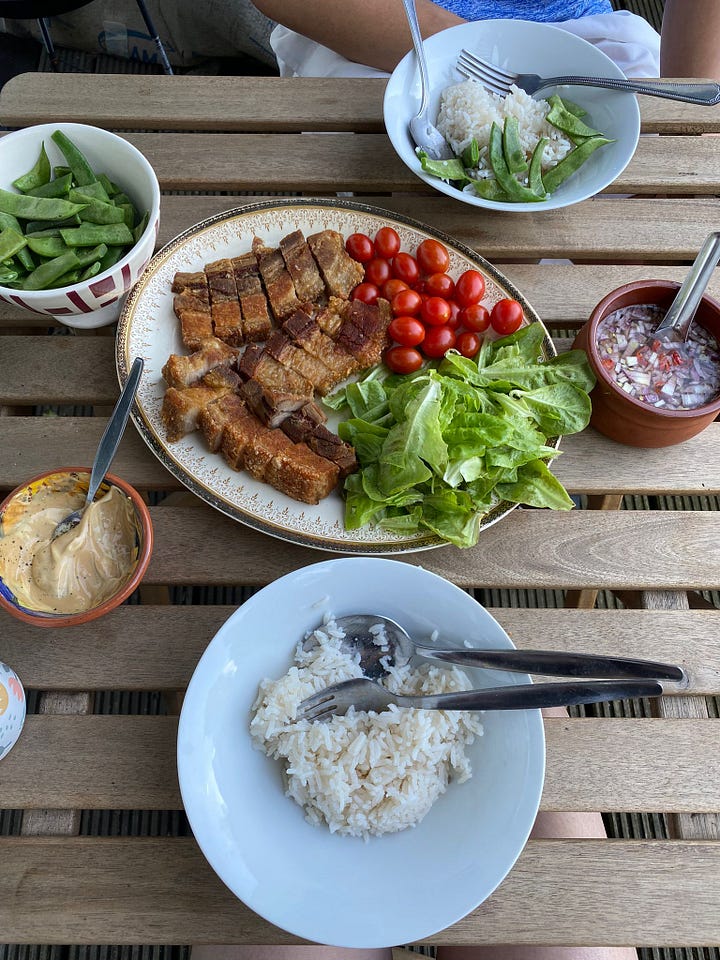
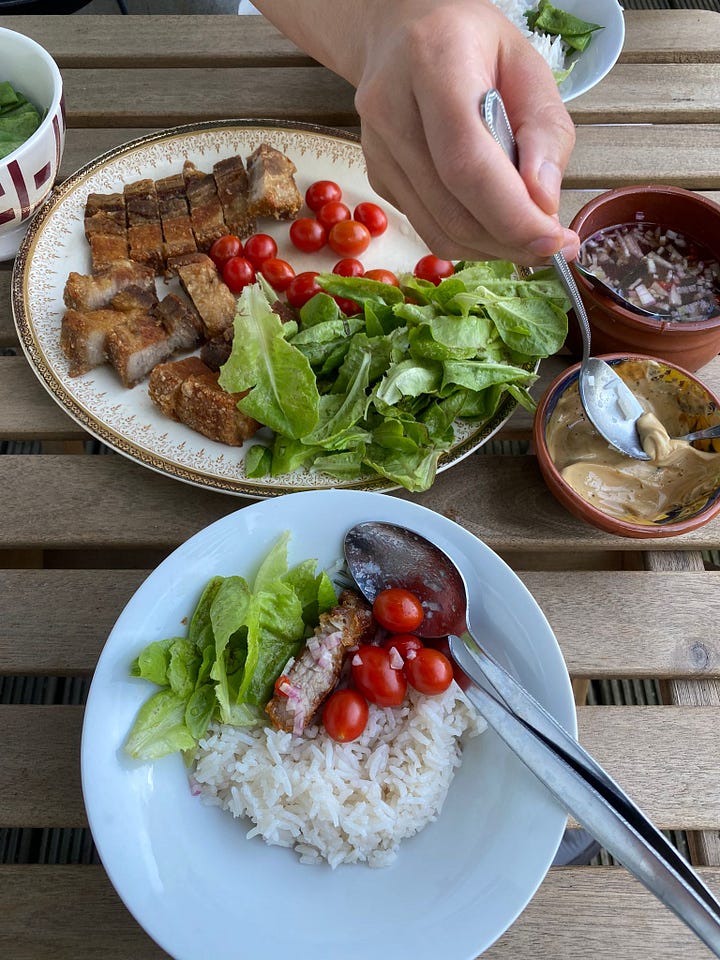
Crispy pork belly
Serves 4




